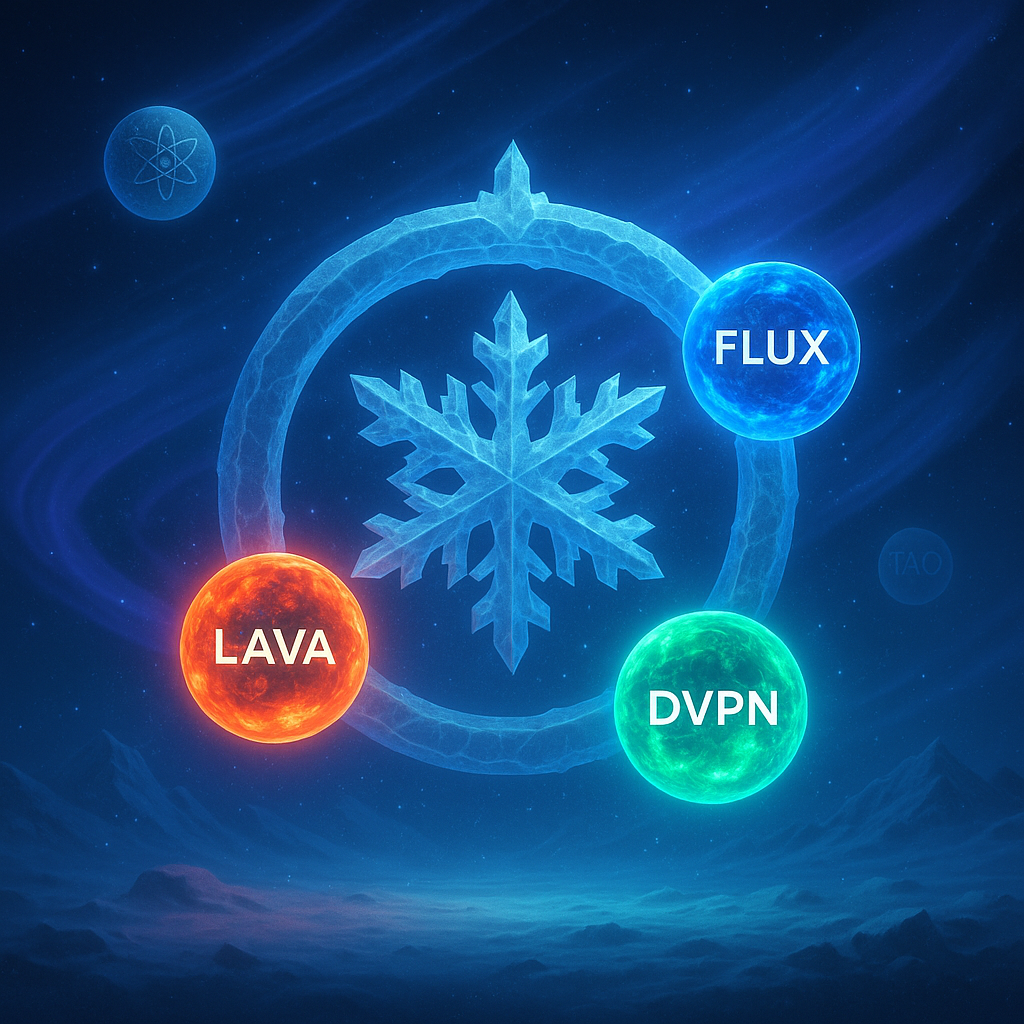From the EVM promise to a return to sovereign chains — a six-month journey of confusion in the ATOM ecosystem
In just six months, Cosmos’ aborted EVM pivot wiped out over $400 million in value from the Stride project alone, marking one of the most costly governance crises in DeFi history. This debacle exposes deep flaws in a technologically advanced but politically immature ecosystem, where major strategic decisions still escape any effective democratic control.
While Cosmos was going through an identity crisis, its competitors were gaining ground: Berachain raised $100 million by leveraging its community-driven strategy, Solana attracted a significant number of Cosmos developers, and Ethereum Layer 2s captured an additional $15 billion in TVL. This situation raises a fundamental question: how did a pioneer of blockchain interoperability lose its way so badly?
The EVM Pivot: Timeline of a Foretold Shipwreck
In 2024, Interchain Labs (ICL) announced a major strategic shift for Cosmos: turning the Hub into an EVM-compatible platform. This new direction, led notably by 0xMagmar, promised to breathe new life into ATOM by increasing its utility in the EVM DeFi space. The idea seemed appealing on paper: enable Ethereum smart contracts to run natively on the Cosmos Hub, attracting developers and liquidity from the Ethereum ecosystem.
Projects like Stride aligned with this vision, heavily investing in tailored infrastructure. ICL even suspended grants to “classic” Cosmos projects to concentrate resources on this pivot. The strategy was clear: burn the old bridges to conquer new territories.
But by June 2025, everything changed: during a town hall, ICL leadership officially abandoned the pivot, admitting that competing with Base or Berachain was like “heading toward a cliff.” The Hub would not become EVM-compatible, and the ecosystem returned to a modular sovereign chain model. The abrupt U-turn left projects destabilized and the community outraged.
The irony? This outcome was foreseeable to anyone not “trapped in the Cosmos bubble.” As one sharp critic put it:
“If you weren’t stuck in this bubble, you’d have seen it coming in days.”
Collateral Damage: When Strategy Crushes Projects
The most painful example is Stride, a key liquid staking protocol whose DEX was built on the EVM Hub promise. The result? Its token plummeted over 90% between March and December 2024, wiping out more than $400 million in market cap.
Worse still, rumors suggest the token crash preceded the official pivot announcement, raising suspicions of misinformation or insider trading.
An anonymous developer shared:
“We had hired a team, raised funds, and built a roadmap around EVM-Cosmos. Overnight, our business model collapsed. Some projects didn’t survive.”
Beyond financial loss, trust was shattered. A community accustomed to transparency saw a sudden strategic change with no consultation or long-term vision. Even community-driven projects like NFT collectives felt abandoned by Cosmos’ leadership, fueling long-lasting resentment.
The New ICL Playbook: Back to Basics or Running Away?
Following the failed pivot, ICL quickly shifted gears. The new strategy:
👉 A focus on sovereign chains for institutional use cases — stablecoins, banks, SWIFT-to-IBC messaging, integration with traditional finance.
👉 The Cosmos Stack is now framed as a SaaS infrastructure product.
This pivot has a certain logic: in an increasingly regulated environment, sovereign chains offer institutions full control — from governance to consensus mechanisms. Partnerships with entities like Ripple and Babylon Labs reflect growing institutional interest.
But one key question remains:
What role does ATOM play in this new architecture?
Utility token? Collateral for shared security? Governance token? Or just a funding source for ICL?
This ambiguity feeds frustration in a community still seeking a long-term value proposition for its flagship asset.
AtomOne: Constructive Dissent or Fatal Fragmentation?
Amid this leadership crisis, AtomOne emerged — a fork of Cosmos Hub initiated by Jae Kwon and other community members opposed to ICL’s governance.
AtomOne offers a radically different model:
- A minimalist, constitutional chain
- No delegated voting
- A dual-token system: ATONE (staking/governance) and PHOTON (fees)
This anti-EVM approach is attracting a growing base of decentralization purists, tired of ICL’s strategic U-turns.
Is this a case of healthy competition or damaging fragmentation?
The answer will depend on whether Cosmos Hub and AtomOne can peacefully coexist via IBC.
Cosmos’ architecture uniquely allows developers to fork ideology as well as code, creating interoperable parallel ecosystems — a flexibility that could be a strategic asset.
Weak Signals, Strong Hopes
Despite the turmoil, several promising developments stand out:
- MANTRA, focused on real-world asset tokenization (RWA), uses IBC for cross-chain integration
- Babylon Labs could redefine Cosmos security via Bitcoin staking
- Stargaze, a major NFT platform, announced its migration to the Hub, boosting ATOM’s utility in the NFT space
Community-led initiatives like Ark Protocol are also filling the vacuum left by ICL’s marketing absence, bridging Cosmos with Solana, Monad, and Pyth Network, and working on an EVM-NFT bridge.
Three Scenarios for Cosmos’ Future
🔴 Pessimistic scenario:
Cosmos fractures, developers flee to Berachain, Solana, or Ethereum L2s. ATOM becomes a symbolic asset with no real utility.
🟢 Optimistic scenario:
Sovereign chains thrive, ATOM becomes a systemic asset for collateral and security. A new, transparent governance model emerges. AtomOne and the Hub cooperate to build a richer, more resilient ecosystem.
🟡 Hybrid scenario:
Cosmos remains technically relevant in niche areas, but fails to rally a unified community. EVM stays peripheral via satellite chains, AtomOne becomes a dissident safe haven. The ecosystem survives, but in a fragmented, sub-optimal form.
Conclusion: A Crucial Turning Point
Cosmos remains a powerful and innovative tech stack, but the mismanaged 2024–2025 pivot revealed deep governance shortcomings that may prove costly long-term.
Lack of marketing strategy, persistent ambiguity around ATOM’s purpose, and top-down decision-making from ICL raise serious doubts about the ecosystem’s institutional maturity.
Yet there is hope: promising technical innovations, institutional partnerships, and above all, grassroots alternatives like AtomOne show that Cosmos still has creative energy.
The debate between centralized efficiency and decentralized resilience is more relevant than ever.
This crisis raises fundamental questions about decentralized governance:
- How could such a radical pivot be made without community consultation?
- What institutional safeguards are needed to prevent future missteps?
These are questions not only for Cosmos — but for the future of decentralized finance as a whole.









